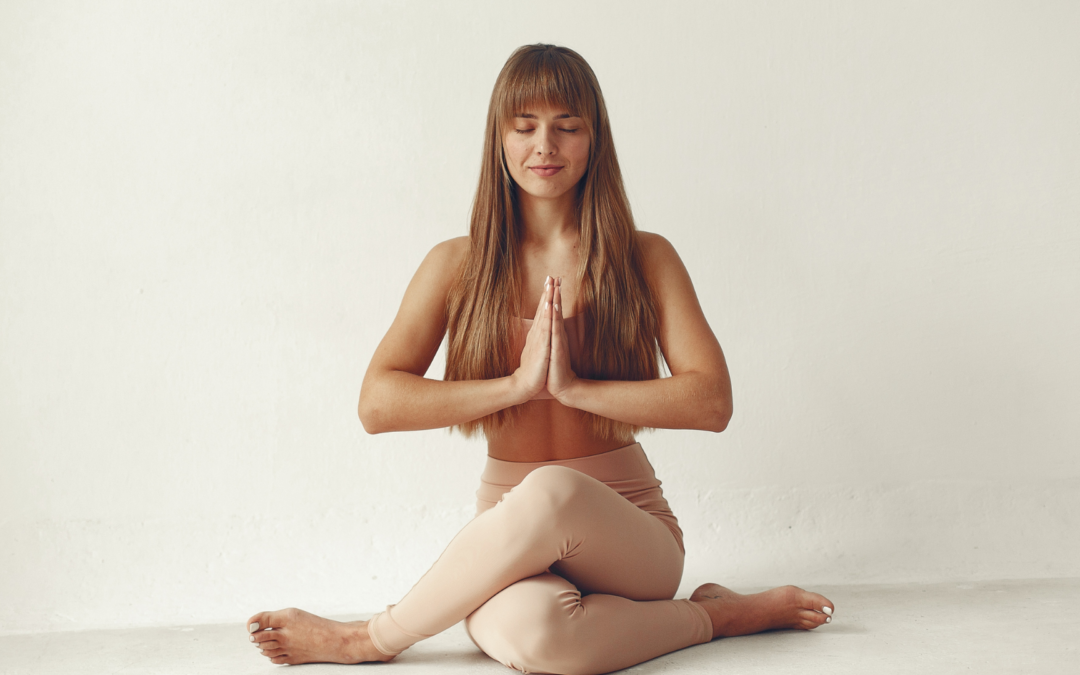Yoga for Stress Relief: Poses and Practices
Stress has become an almost unavoidable part of our lives. The constant hustle and bustle, deadlines, and daily challenges can leave us feeling overwhelmed and frazzled. However, there is a time-tested practice that offers a sanctuary of calm and balance: yoga. Let’s explore how yoga can help manage stress, along with some specific poses and practices that can bring serenity into your life.
Understanding Stress and How Yoga Helps
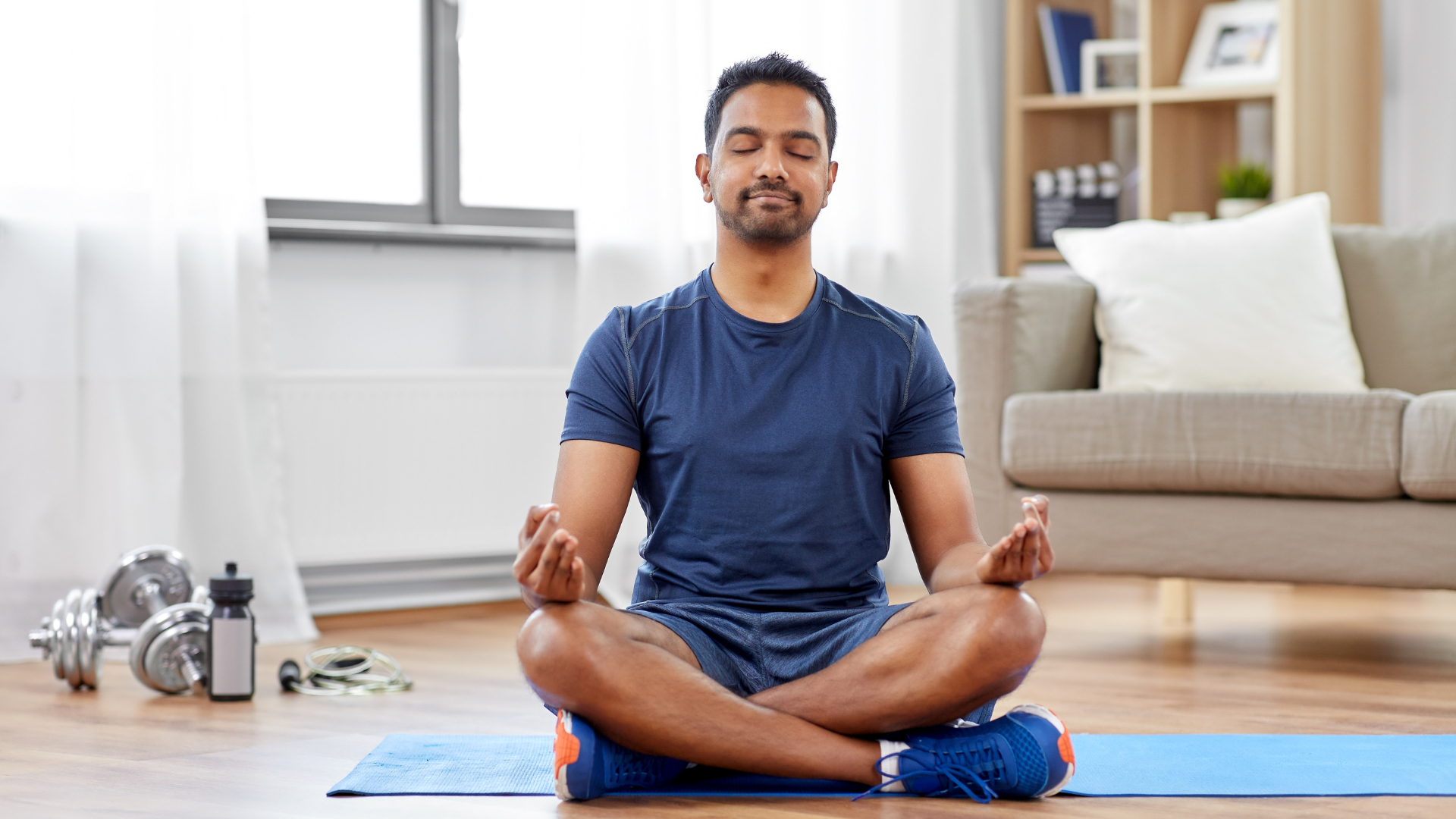
Stress is the body’s natural response to challenges and demands. While some stress is normal and even beneficial, chronic stress can take a toll on our physical and mental health. Yoga, an ancient practice that combines physical postures, breathing exercises, and meditation. Online yoga classes for stress relief offer a holistic approach to stress management. A study shows that people who practiced yoga felt much less stress and mental distress and had a higher sense of well-being compared to those who did not practice yoga.
How Yoga Alleviates Stress:
- Physical Release: Yoga postures (asanas) stretch and strengthen the body, releasing built-up tension in muscles.
- Mental Clarity: The mindfulness aspect of yoga encourages you to focus on the present moment, reducing worry about past or future events.
- Breath Control: Yoga emphasizes deep, mindful breathing, which activates the parasympathetic nervous system, promoting relaxation.
- Endorphin Boost: Physical activity, including yoga, increases the production of endorphins, the body’s natural mood lifters.
Discover the Benefits of Yoga for Stress Relief in Our Latest Blog: “Can Yoga Help With Stress?“
Essential Yoga Poses for Stress Relief
Here are five yoga poses that are particularly effective in relieving stress. You can incorporate these into your daily routine or practice them whenever you need a moment of calm.
1. Child’s Pose (Balasana)
Benefits: Calms the mind, stretches the back, and relieves tension.
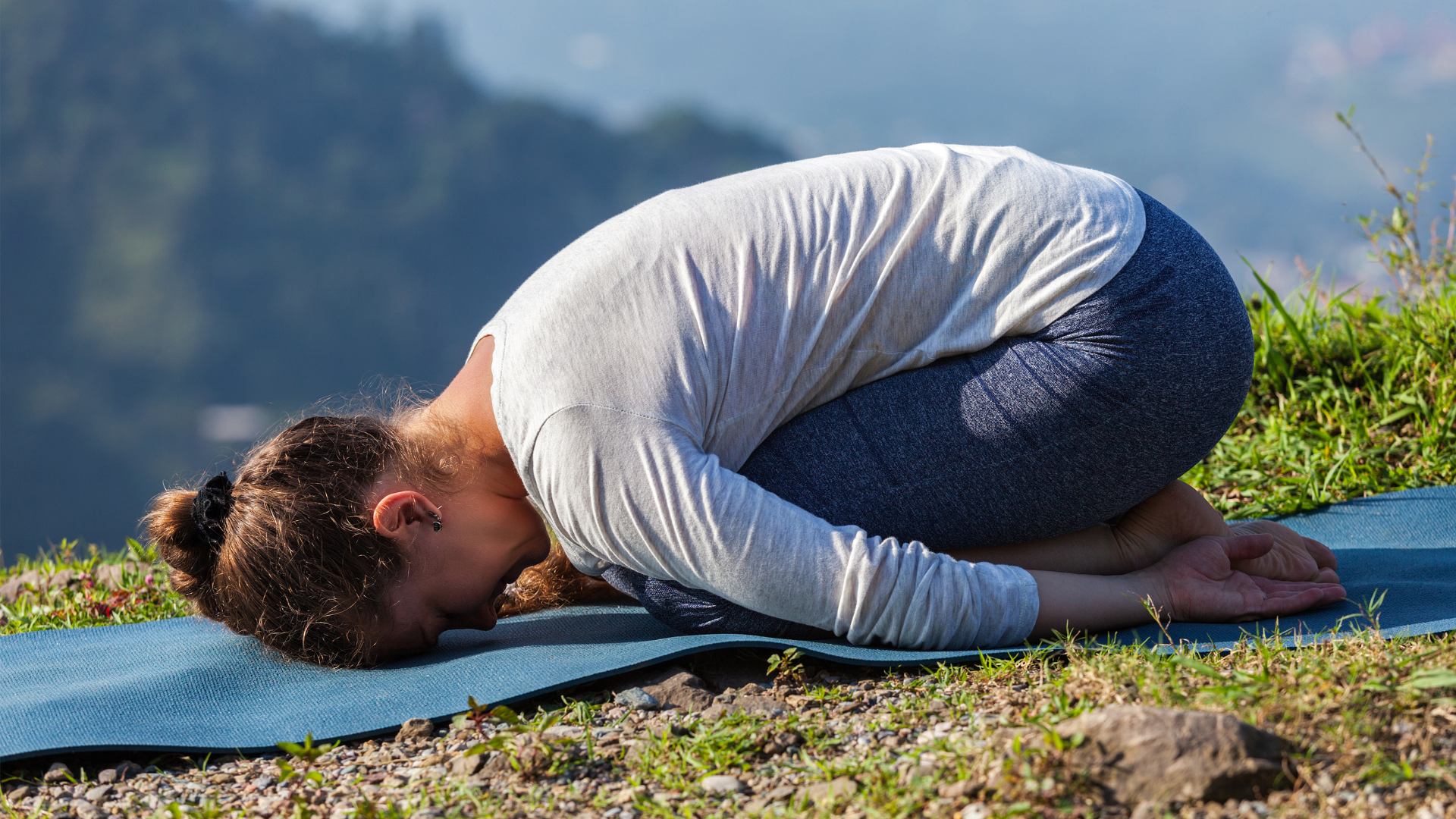
How to Do It:
- Kneel on the floor, touching your big toes together and sitting on your heels. Spread your knees hip-width apart.
- Exhale and lay your torso down between your thighs. Extend your arms forward with palms facing down.
- Rest your forehead on the mat and relax your shoulders.
- Breathe deeply and stay in this pose for at least one minute.
Why It Works: Child’s Pose is a gentle resting pose that helps to calm the nervous system. The forward fold naturally brings a sense of surrender, making it easier to let go of stress and tension. The deep, steady breaths you take in this pose help to slow down the heart rate and bring a sense of peace.
2. Cat-Cow Pose (Marjaryasana-Bitilasana)
Benefits: Releases tension in the spine, promotes flexibility, and synchronizes breath with movement.
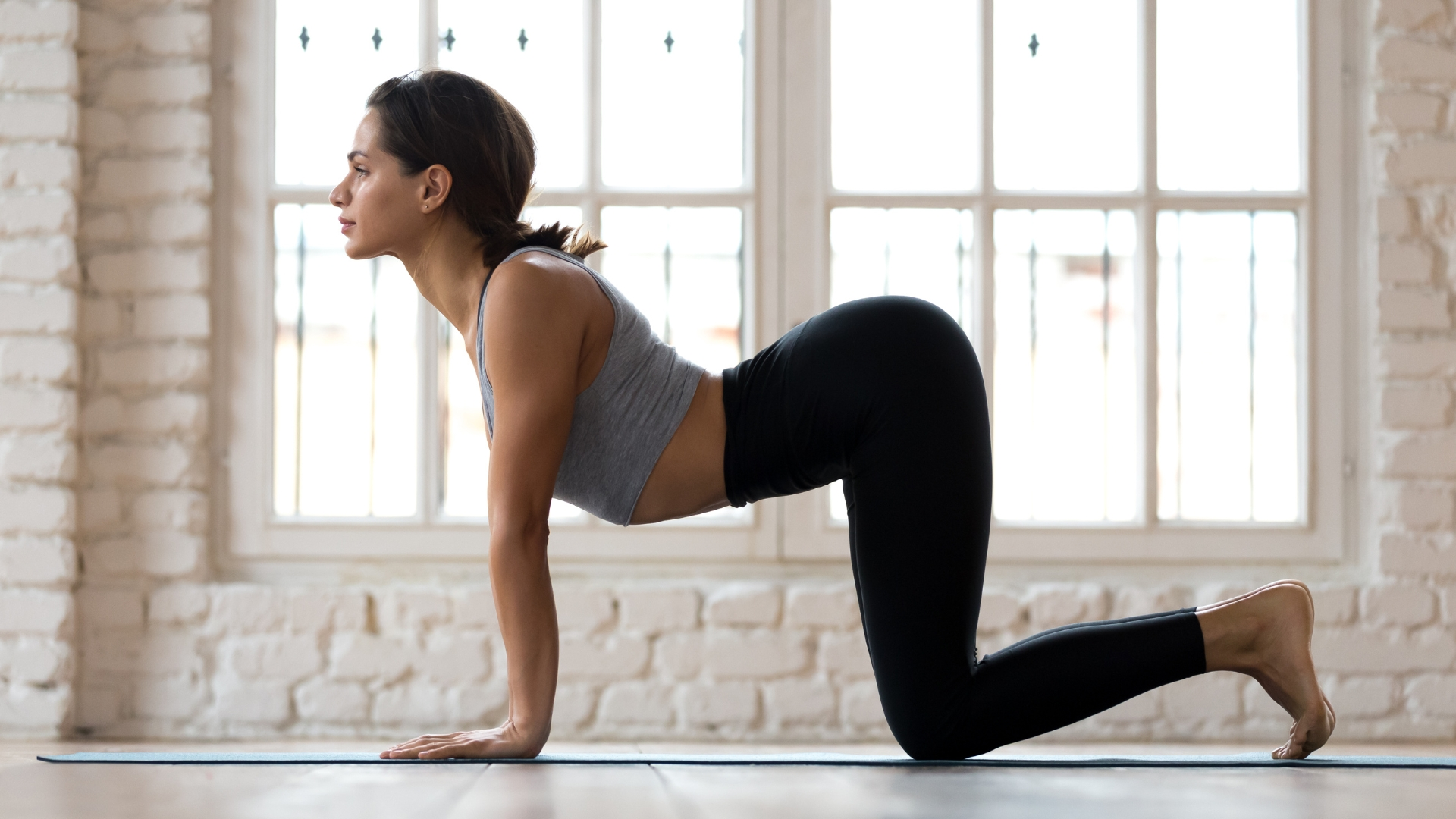
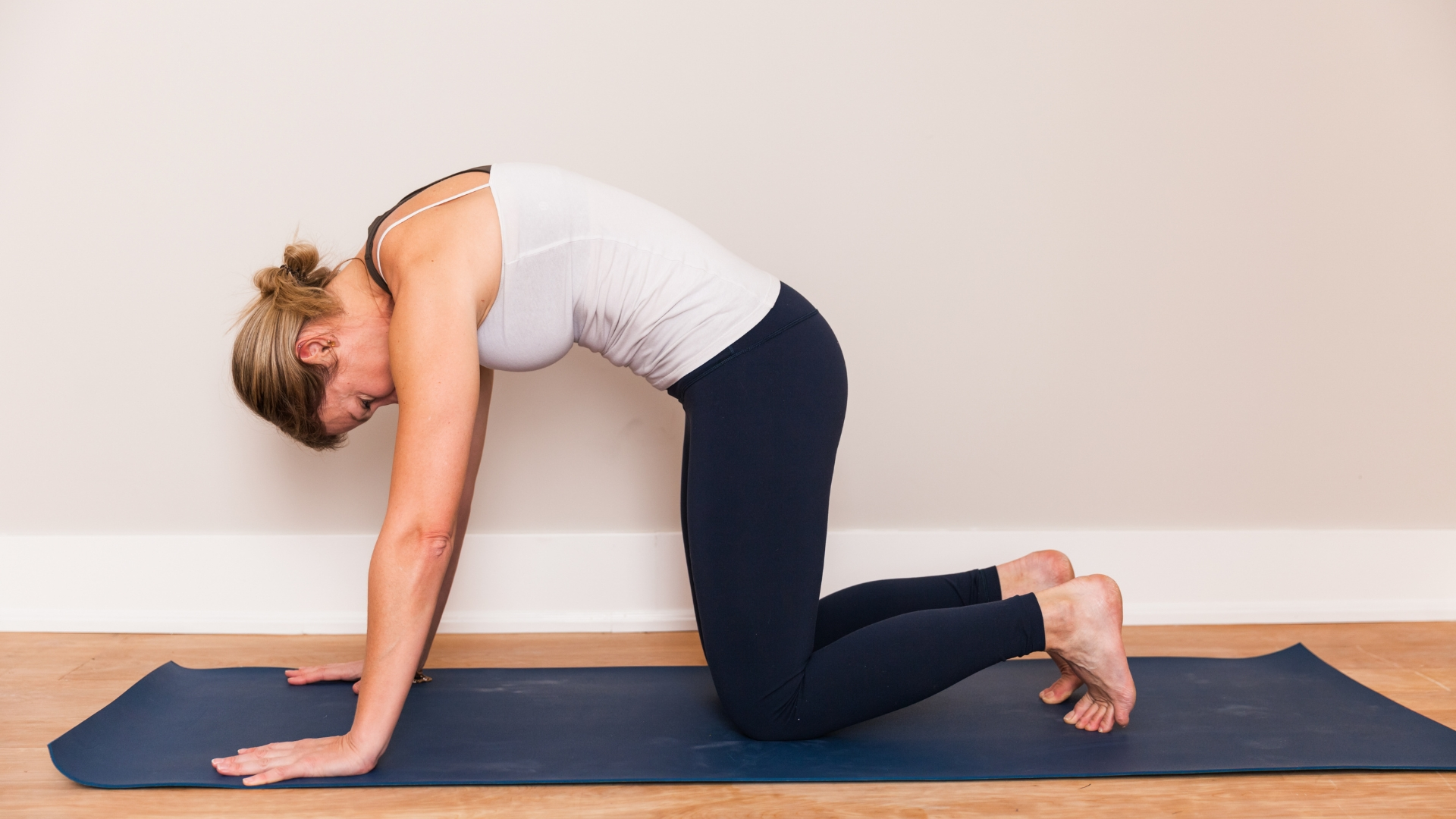
How to Do It:
- Start on your hands and knees in a tabletop position, with wrists directly under shoulders and knees under hips.
- Inhale, drop your belly towards the mat, lift your head and tailbone, coming into Cow Pose.
- Exhale, round your spine towards the ceiling, tucking your chin to your chest, and coming into Cat Pose.
- Continue to flow between Cat and Cow poses, matching your breath to your movements.
Why It Works: The gentle movement between Cat and Cow poses helps to release tension in the spine and back muscles. This flow is particularly beneficial for those who spend long hours sitting or standing, as it promotes flexibility and mobility in the spine. The synchronized breath and movement create a meditative rhythm that calms the mind and reduces stress.
3. Standing Forward Bend (Uttanasana)
Benefits: Calms the mind, stretches the hamstrings, and promotes blood flow to the brain.
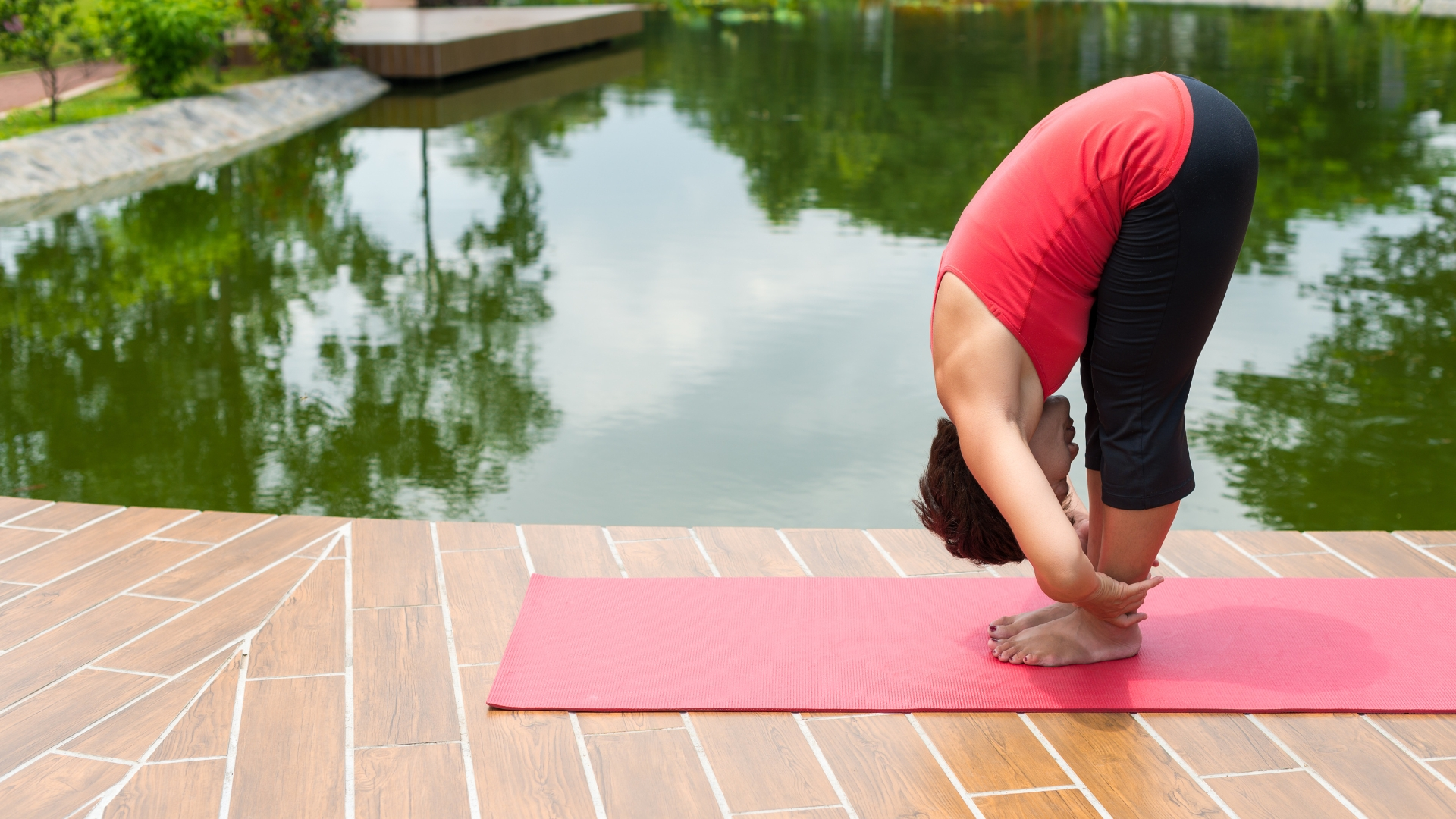
How to Do It:
- Stand with your feet hip-width apart.
- Exhale and bend forward from the hips, keeping your spine long.
- Let your head hang heavy and reach for the floor or your ankles.
- Hold the pose for a few deep breaths, allowing the tension to release from your body.
Why It Works: Standing Forward Bend is an inversion, meaning your head is below your heart. This position helps to calm the mind and reduce anxiety. The stretch in the hamstrings and lower back can also release physical tension. The gentle pressure on the top of the head can stimulate the parasympathetic nervous system, promoting relaxation and reducing stress.
4. Legs Up the Wall (Viparita Karani)
Benefits: Reduces anxiety, promotes relaxation, and relieves tired legs.

How to Do It:
- Sit close to a wall and lie on your back, swinging your legs up the wall.
- Adjust your position so your sit bones are close to the wall and your legs are straight up.
- Rest your arms by your sides, palms facing up.
- Close your eyes and breathe deeply, staying in this pose for 5-10 minutes.
Why It Works: Legs Up the Wall is a restorative pose that helps to calm the nervous system and promote relaxation. The gentle inversion encourages blood flow back to the heart, which can help to reduce swelling and fatigue in the legs. This pose is especially beneficial at the end of a long day, as it helps to release tension and stress from the lower body.
5. Corpse Pose (Savasana)
Benefits: Provides deep relaxation, reduces stress, and helps integrate the benefits of your yoga practice.
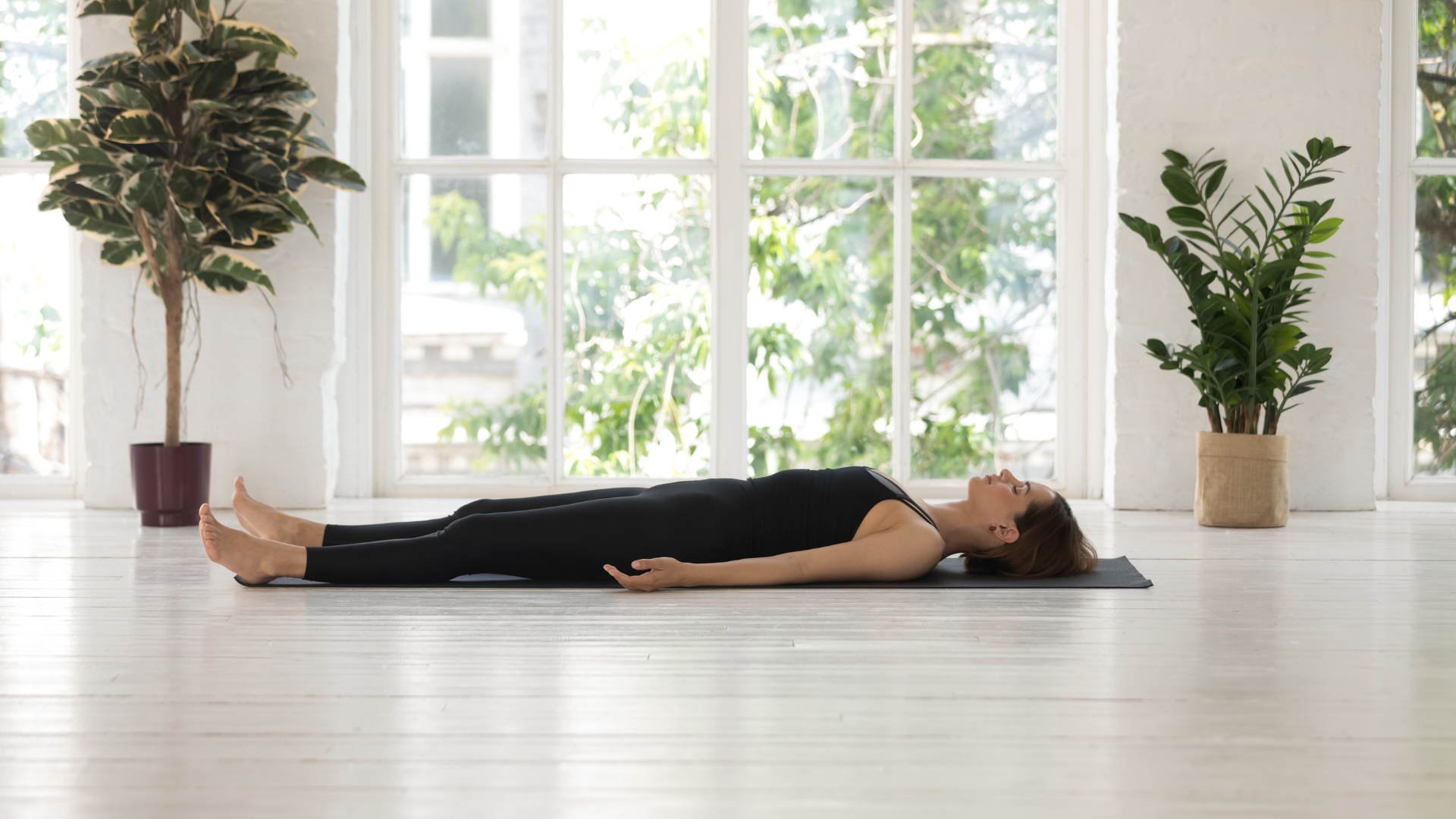
How to Do It:
- Lie flat on your back with your legs slightly apart and arms resting at your sides, palms facing up.
- Close your eyes and take slow, deep breaths.
- Focus on relaxing each part of your body, from your toes to the top of your head.
- Stay in this pose for at least 5 minutes, allowing your body and mind to completely relax.
Why It Works: Corpse Pose is the ultimate relaxation pose. It allows your body to rest and recover, integrating the physical and mental benefits of your yoga practice. The focus on deep, mindful breathing helps to reduce stress and anxiety, promoting a state of deep relaxation and calm.
Incorporating Breathing Techniques (Pranayama)
Breathing exercises are a powerful tool in managing stress. Here are a few pranayama techniques that you can practice to enhance your yoga routine:
1. Deep Belly Breathing
How to Do It:
- Sit or lie down in a comfortable position.
- Place one hand on your belly and the other on your chest.
- Inhale deeply through your nose, allowing your belly to rise and your chest to stay still.
- Exhale slowly through your mouth, letting your belly fall.
- Repeat for several minutes, focusing on the rhythm of your breath.
Why It Works: Deep Belly Breathing encourages full oxygen exchange, which slows the heartbeat and can lower or stabilize blood pressure. It activates the parasympathetic nervous system, promoting relaxation and reducing stress.
2. Alternate Nostril Breathing (Nadi Shodhana)

How to Do It:
- Sit in a comfortable position with your spine straight.
- Use your right thumb to close your right nostril.
- Inhale deeply through your left nostril.
- Close your left nostril with your ring finger, and open your right nostril.
- Exhale through your right nostril.
- Inhale through your right nostril, close it with your thumb, and exhale through your left nostril.
- Continue this pattern for several minutes.
Why It Works: Alternate Nostril Breathing balances the nervous system, enhances respiratory function, and promotes mental clarity. It’s a simple yet powerful practice to calm the mind and reduce stress.
3. Ocean Breath (Ujjayi)
How to Do It:
- Sit comfortably with your spine straight.
- Inhale deeply through your nose, slightly constricting the back of your throat to create a soft, ocean-like sound.
- Exhale slowly through your nose, maintaining the constriction in your throat.
- Focus on the sound of your breath, continuing for several minutes.
Why It Works: Ujjayi breath increases oxygenation and generates internal heat, which can help to relax the body and calm the mind. The soothing sound of the breath creates a meditative quality, reducing stress and anxiety.
Incorporating Meditation and Mindfulness
Meditation and mindfulness are integral parts of yoga that help calm the mind and reduce stress. Here are some simple practices to get you started:
1. Mindful Breathing Meditation

How to Do It:
- Find a quiet, comfortable place to sit or lie down.
- Close your eyes and take a few deep breaths.
- Focus your attention on your breath, noticing the sensation of air entering and leaving your body.
- If your mind wanders, gently bring your focus back to your breath.
- Continue for 5-10 minutes, gradually increasing the duration as you become more comfortable with the practice.
Why It Works: Mindful Breathing Meditation helps to center your thoughts and bring you into the present moment. This practice can reduce anxiety and create a sense of inner peace, making it easier to cope with stress.
2. Body Scan Meditation
How to Do It:
- Lie down in a comfortable position and close your eyes.
- Take a few deep breaths to relax.
- Starting at your toes, slowly bring your attention to each part of your body, noticing any sensations or tension.
- Move up through your body, part by part, until you reach the top of your head.
- Spend a few moments focusing on your entire body, feeling a sense of relaxation and awareness.
Why It Works: Body Scan Meditation increases body awareness and helps to release physical tension. By systematically relaxing each part of the body, you can achieve a deep state of relaxation and reduce overall stress.
Tips for a Successful Yoga Practice
- Consistency is Key: Join regular online yoga classes to practice yoga regularly, even if it’s just for a few minutes each day.
- Create a Calm Environment: Find a quiet space where you won’t be disturbed. Use a yoga mat, comfortable clothing, and calming music if it helps.
- Listen to Your Body: Pay attention to how your body feels in each pose. Avoid pushing yourself too hard and respect your limits.
- Stay Patient: Stress relief through yoga is a gradual process. Be patient with yourself and enjoy the journey.
Conclusion
Yoga is a wonderful tool for managing stress and finding balance in your life. By incorporating these poses, breathing techniques, and mindfulness practices into your routine, you can create a sanctuary of calm amidst the chaos. Remember, the goal of yoga is not perfection but progress. So, take a deep breath, roll out your mat, and embark on this journey to a more relaxed and centered you.
Inquiry
If you have any questions, please feel free to reach out. We’ll be glad to help!

